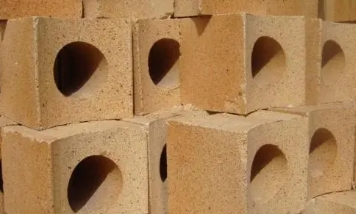- 24
- Nov
Refractory materials for lime kiln
Refractory materials for lime kiln
Lime kiln is mainly divided into square kiln and round kiln. According to the classification of fired products, there are lime kilns and ceramic kilns. It is divided into preheating zone, firing zone and cooling zone.
In fact, the use temperature of the preheating zone on the top of the lime kiln is not very high, but the raw materials are likely to cause great abrasion on the refractory bricks when the products are burned, and the furnace gas will cause serious chemical corrosion to the refractory bricks. Therefore, we must pay attention to the strength, density, wear resistance and corrosion resistance of refractory bricks.
Although the preheating zone does not require high temperature of refractory bricks, the requirements for other properties of refractory bricks are very strict. Many factories use high alumina bricks and clay bricks, which are different.
calcination area. The calcining zone is the area where the chemical reaction of refractory bricks used in the lime kiln is the strongest, and the calcining zone is also the stage with the highest temperature. So be careful when you have bricks. Has good thermal shock resistance, corrosion resistance and wear resistance. Use dense high-alumina bricks.
The calcination zone initially used dense high-alumina refractory bricks. However, in recent years, the use of alkaline refractory bricks has been better, consistent with the lime gas field. At present, due to cost reasons, there are many high alumina bricks, but phosphate bricks and phosphate composite bricks are also very useful. It depends on the usage habits and cost of each unit.
However, it is impossible to use alkaline bricks in the firing zone. In the parts close to the preheating zone and cooling zone, wear resistance is more important than corrosion resistance. Many manufacturers still use high-alumina refractory bricks with good wear resistance and high refractory temperature.
Then there is the cooling zone. Because when the quicklime enters the cooling zone, there will still be a lot of heat flowing back and forth in the cooling zone. The refractory bricks in the cooling zone should also have abrasion resistance, resistance to rapid cooling and heating, and resistance to peeling. But when the shaft kiln has a small diameter, many manufacturers also choose clay bricks.

